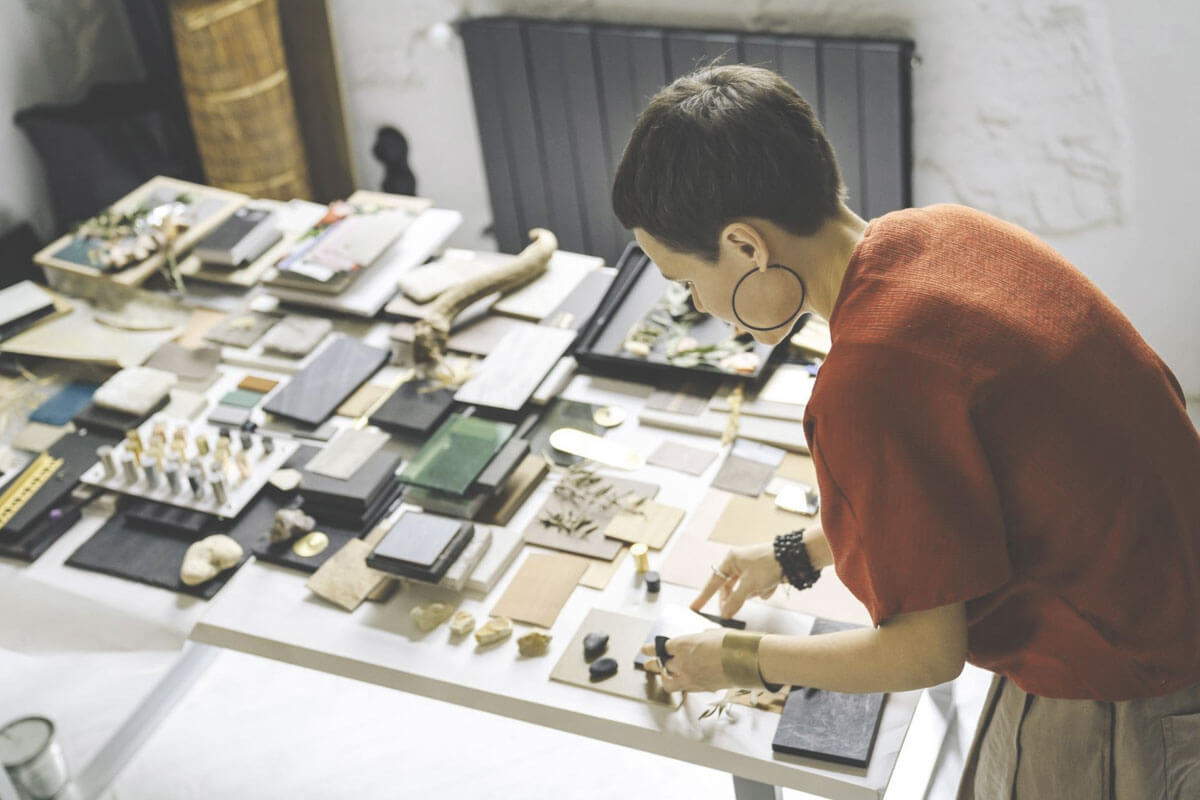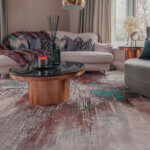Your interior design approach shapes how you create spaces that feel both beautiful and functional. Today’s most effective methods blend classic design principles with wellness-focused elements, sustainable materials, and sensory-rich experiences that make every room feel intentional and personally meaningful. A systematic progression through a series of steps in logical sequence helps solve design problems effectively, whether you’re working on simple updates or complex renovations.
- Understanding Core Interior Design Principles
- Creating Warm, Welcoming Environments
- Incorporating Biophilic and Natural Elements
- Building Sustainable and Eco-Friendly Spaces
- Embracing Bold Colors and Rich Textures
- Designing for Health and Well-Being
- Modern Tools and Technology Integration
- Function-First Layout Planning
Understanding Core Interior Design Principles
Start with the fundamentals that make any space work well. Design fundamentals create structure and guide your choices through a proven design methodology.
The foundation includes emphasis (creating focal points), unity (making everything feel connected), functionality (ensuring the space works for daily life), and materiality (choosing textures and finishes that enhance the mood). These interior design principles work together through a comprehensive approach that considers both aesthetic appeal and practical needs. The design process blends creativity with functionality, transforming rooms into living experiences. You don’t need expensive items to apply these concepts—smart layout decisions and thoughtful color choices matter more than price tags.
Creating Warm, Welcoming Environments
Warmth has become the defining characteristic of successful interiors in 2025, with designers moving away from cool whites and grays toward warm off-whites, tans, beiges, and creams. This shift reflects our desire for spaces that feel nurturing and comforting, avoiding the haphazard design choices that create cold, unwelcoming environments.
Wood elements used as ceiling beams, trim, millwork, wall paneling, and cabinetry add architectural warmth throughout the home. Choose honey-toned oak, rich walnut, or warm cherry for furniture and accents. Layer in soft textures through pillows, throws, and area rugs. This systematic method of building warmth ensures every element works together harmoniously. Lighting plays a huge role too—warm LED bulbs and layered lighting sources create the cozy atmosphere that makes people want to stay and relax.
Incorporating Biophilic and Natural Elements
Biophilic design connects your home to nature through materials, colors, and living elements. This biophilic methodology supports mental health and creates calming environments backed by extensive research.
Biophilic design benefits physical and mental health by reducing stress, improving air quality, and fostering environments that enhance learning and community engagement. Research shows connections to nature can reduce stress, enhance creativity and clarity of thought, improve well-being and expedite healing. Add plants throughout your space, choose furniture made from sustainable materials like bamboo or reclaimed wood, and use natural elements such as stone accents or water features. Colors inspired by nature—forest greens, earth browns, and sky blues—help establish this connection. Even small changes like switching to linen curtains or adding a few potted herbs can make rooms feel more alive and refreshing.
Sensorial Design Elements
Sensorial design incorporates textures, scents, sounds, and lighting to create immersive spaces with psychological benefits, with research showing that multisensory biophilic environments improve cognitive performance while reducing stress. Think beyond just visual appeal to engage all your senses through spatial planning that considers how people move through and experience each room.
Consider adjustable lighting for different moods, textured wall treatments, aromatic candles, and materials you want to touch. A rough-hewn wooden coffee table, soft velvet pillows, or a textured area rug all contribute to sensory-rich spaces that feel more engaging and memorable than flat, one-dimensional rooms. Simple changes using carpet, wallpaper and window blinds with patterns based on biomorphic forms led to improved academic performance and enhanced stress recovery.
Building Sustainable and Eco-Friendly Spaces
Sustainable materials and eco-conscious choices have moved from trend to standard practice. This design philosophy benefits both your health and the environment while reflecting a culturally-responsive awareness of environmental challenges.
Sustainability remains at the forefront of interior design, with designers focusing on creating beautiful spaces that are kind to the planet using vegan leathers, non-toxic materials, and eco-friendly products as essentials rather than options. Choose furniture made from responsibly sourced wood, look for low-VOC paints and finishes, and select textiles made from organic or recycled fibers. Eco-friendly decor doesn’t mean sacrificing style—many sustainable options offer unique textures and character that mass-produced items lack. This professional approach to material selection considers long-term environmental impact alongside immediate aesthetic appeal. Vintage and secondhand pieces also reduce environmental impact while adding personality to your space.
Embracing Bold Colors and Rich Textures
Bold, saturated colors and rich jewel tones like emerald green, sapphire blue, forest greens, chocolate browns, and crimson reds are making a comeback. These deeper hues create drama and sophistication that neutral palettes can’t match, representing a shift away from the minimalist strategy that dominated previous years.
Don’t be afraid to use color strategically through a design strategy that balances bold statements with neutral elements. Paint an accent wall in a rich burgundy, choose a statement sofa in deep emerald, or add colorful artwork that draws the eye. Textile designers are playing with scale, with boucle and velvet now appearing in rich hues versus the white of past seasons. These luxurious textures in deeper colors add both visual and tactile interest to any room, creating a more phenomenological experience that engages both sight and touch.
Designing for Health and Well-Being
Well-being interiors prioritize how spaces affect your physical and mental health. This interior design approach considers air quality, natural light, and ergonomic comfort as essential elements rather than afterthoughts.
Biophilic design extends beyond aesthetics to create spaces that enhance physical and mental well-being, with healthcare facilities increasingly recognizing the healing potential of nature-inspired environments. Position furniture to maximize natural light, choose plants that improve air quality, and create dedicated spaces for relaxation or work. Consider the psychological effects of color—blues and greens tend to be calming, while warmer colors feel energizing. Remove clutter that creates visual stress, and ensure good ventilation throughout your home. This structured method of prioritizing health ensures every design decision supports daily well-being.
Modern Tools and Technology Integration
Smart home technology and design software help streamline the planning process and enhance daily living. These tools make professional-level design thinking more accessible to homeowners, though the word “approach” itself derives from the Latin appropriare, meaning “to come near to”—reflecting how we physically and conceptually move closer to our design goals.
3D renderings and virtual tours offer realistic previews of final spaces, allowing clients to see how designs will look once completed and gather feedback for necessary adjustments. Use apps to visualize color schemes before painting, try augmented reality tools to see how furniture fits in your space, and consider smart lighting systems that adjust automatically throughout the day. Adjustable lighting to set the mood has become essential for creating flexible spaces that work for different activities. Technology should enhance comfort and convenience without dominating the visual design—choose devices with clean lines that complement your overall aesthetic.
Function-First Layout Planning
Function-first layout ensures every space works well for your specific lifestyle and needs. Start with how you actually use each room, following a creative framework that prioritizes practical needs before aesthetic preferences.
Professional design companies are mindful of various key factors such as overall space utilization, number of inhabitants, furnishing, fixtures, HVAC and lighting areas during the concept development phase. Map out traffic patterns, identify where you need storage, and plan for both everyday activities and occasional entertaining. Place furniture to encourage conversation in living areas, ensure adequate workspace in kitchens, and create clear pathways throughout your home. Consider lighting needs for different tasks—reading, cooking, relaxing—and plan electrical placement accordingly. This systematic planning prevents common frustrations like insufficient storage or awkward furniture arrangements that look nice but don’t work well in practice.
The most effective interior design approach combines timeless principles with modern insights about wellness, sustainability, and personal expression. This overall framework moves beyond simple decoration to encompass every aspect of how we interact with our living spaces. Start with the fundamentals of emphasis, unity, and functionality, then layer in elements that reflect current trends like warm materials, bold colors, and biophilic design. The implementation phase should focus on creating spaces that not only look beautiful but also support your health and daily activities. Remember that good design evolves over time—you don’t need to implement every trend at once, but thoughtful updates can keep your home feeling fresh and intentional for years to come.





